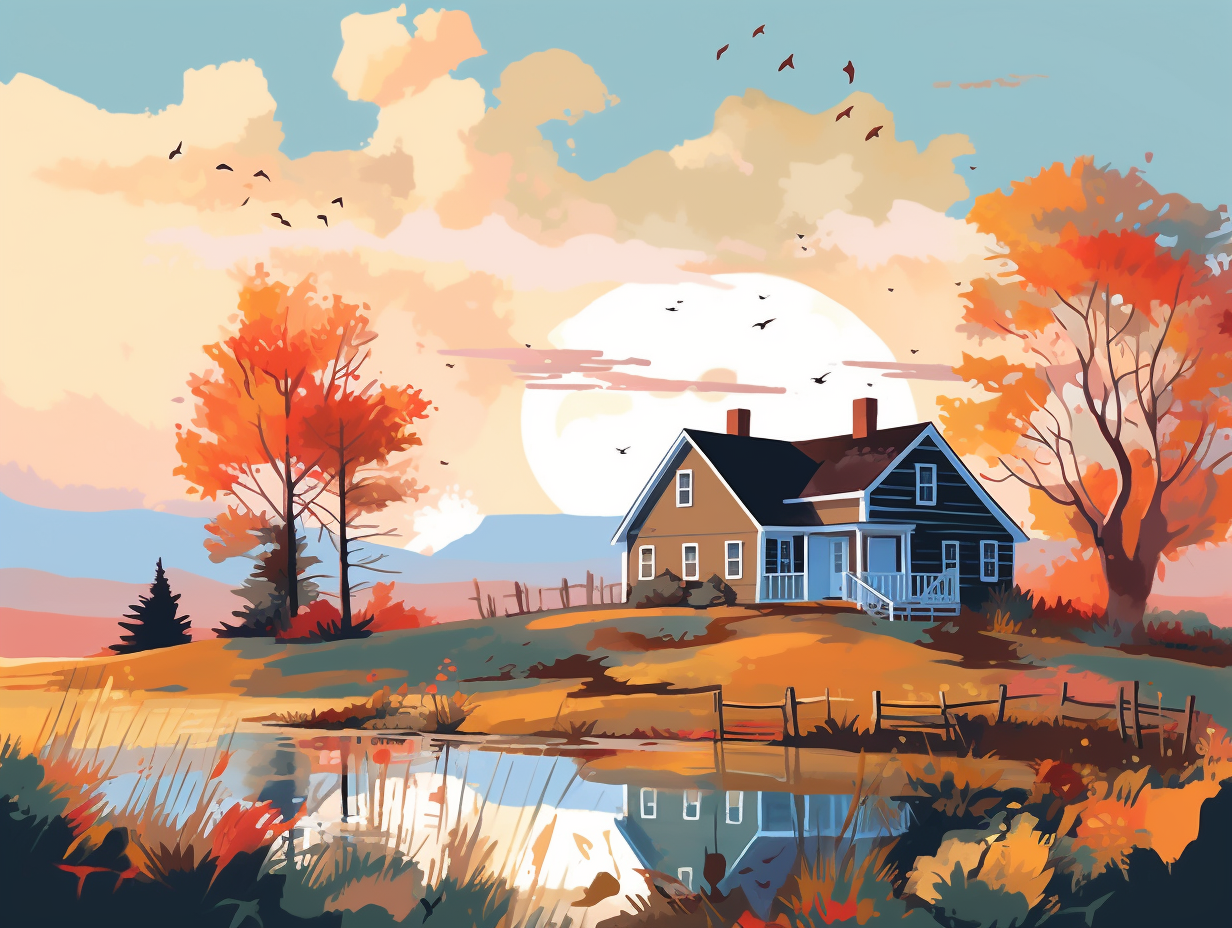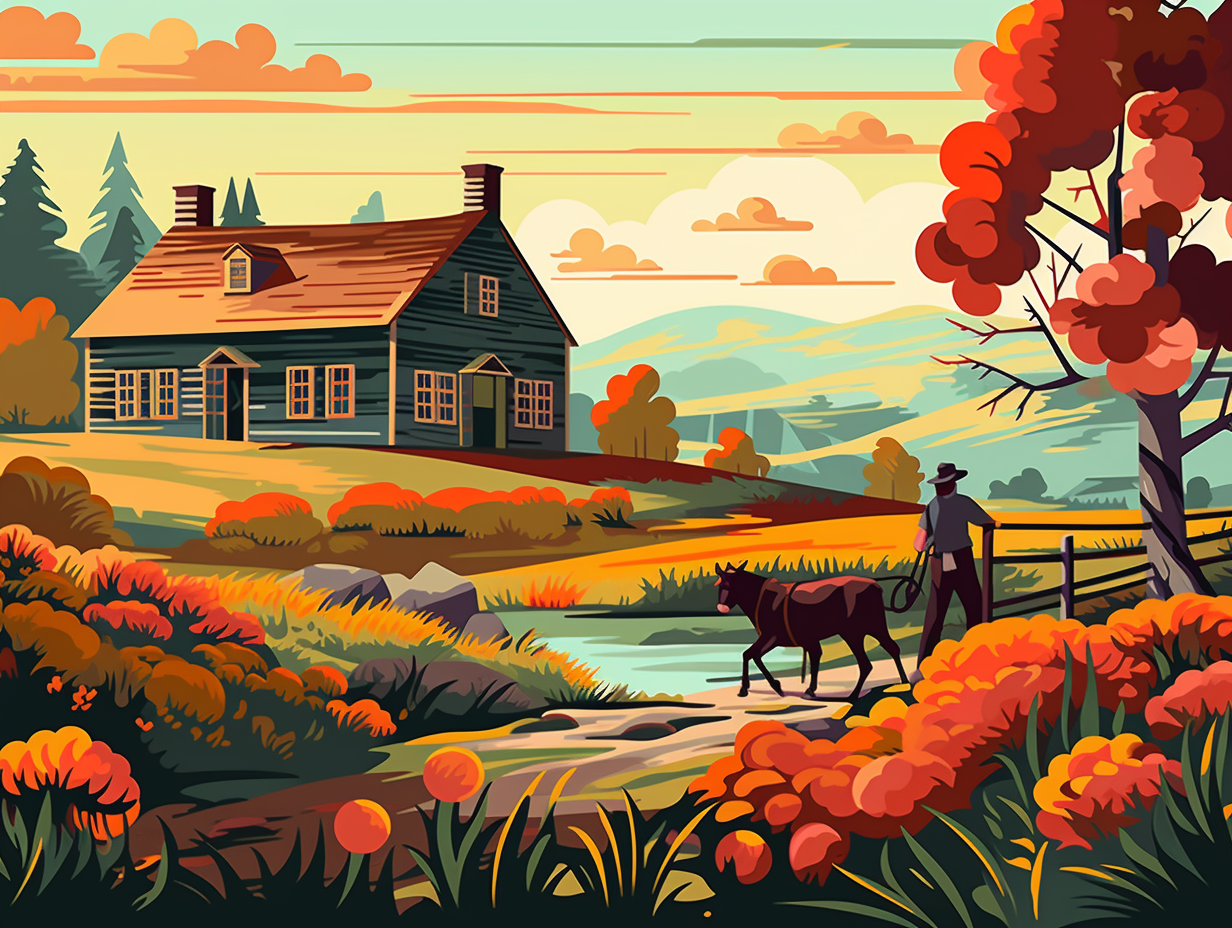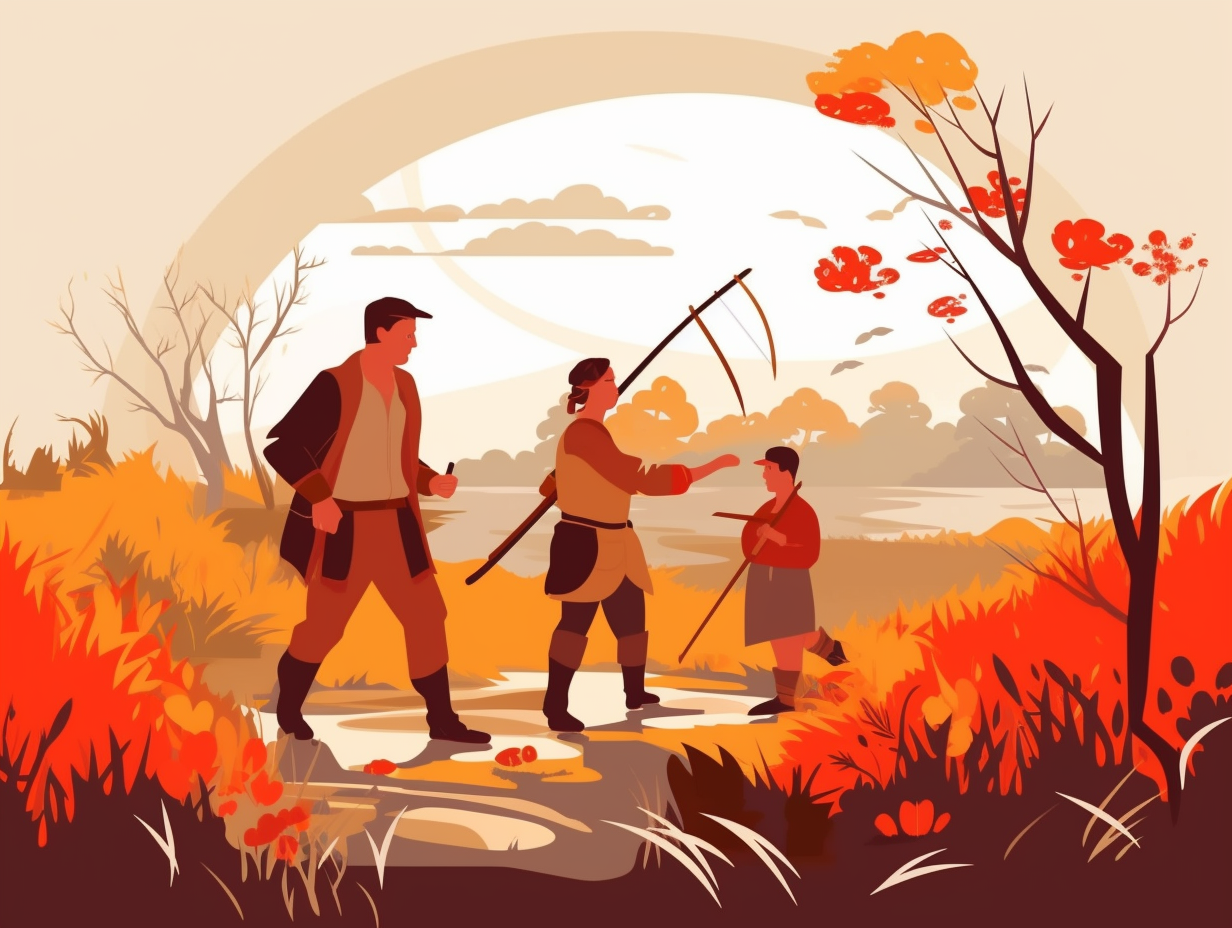Discover the Top 11 Entertaining Fun Facts About the New England Colonies That'll Make You Want to Time Travel!

1. Wall Street's Coffee House Origins
Long before Gordon Gekko was whispering "Greed is good," across the cinematic silver screen, Manhattan's early bankers were busy scheming and clinking cups at an unsuspecting bean juice joint: The Tontine Coffee House, established on Wall Street in the 1790s, wasn't just a hub for caffeinated chatter and gossip but was actually the birthplace of the New York Stock Exchange, where trading deals and financial fates were sealed with a simple sip.
Source => blogs.loc.gov
2. First Post Office in a Tavern
You've got mail – Colonial style: The first American post office was established in Boston in 1639, residing within the cozy confines of Richard Fairbanks' tavern, where weary travelers could have a pint while their letters were sorted. This historic moment paved the way for other New England colony firsts, including Boston's first public park (1634), the establishment of Harvard University (1636), and the pioneering American ironworks in Saugus (1650).
Source => sec.state.ma.us

Did you know the Mayans rocked bedazzled grills way before it was cool? Discover how they used semiprecious stones to create dazzling smiles across ancient Guatemala, Belize, and Honduras!
=> Fun Facts about The-Mayans
3. Roger Williams: First Amendment Pioneer
Ladies and gentlemen, behold the OG First Amendment Fanboy: Roger Williams – parting seas and tipping the scales of liberty with his forward-thinking ways: It was in Providence, Rhode Island of 1636 that Williams laid the groundwork for a sanctum of religious freedom, flinging open the doors for those tormented by the wrath of a more constrained society, and advocating for a divorce between church and state before it was cool or even constitutionally required.
Source => mtsu.edu
4. The Great Snow of 1717
In a winter wonderland gone wild, where an intense game of "Where's Waldo?" broke out between New Englanders and their houses: The Great Snow of 1717, lasting from February 27 to March 7, dumped a staggering five feet of snow (up to 60 inches) in some areas, with drifts reaching up to 20 feet deep - causing folks to exit their homes from second-floor windows, and sadly, leading to significant livestock and deer fatalities.
Source => en.wikipedia.org

5. Inconsistent Puritan Church Attendance
Step right up and witness the greatest show on Puritan soil, a thrilling spectacle of piety and hypocrisy in splendid harmony: Despite the strict religious laws requiring church attendance and support in the New England colonies, early settlers engaged in irregular practices and couldn't maintain consistency in showing up at the church pew.
Source => facinghistory.org
6. Evolution of Massachusetts' Great Seal
What do an Indian waving for help, Paul Revere's engraving skills, and a Latin motto walk into a bar for? A striking glow-up for the Great Seal of Massachusetts: From depicting a Native American with a downward-pointing arrow to featuring an English-American man with the Magna Carta, engraved by Revere himself and carrying the still-in-use motto "Ense petit placidam sub libertate quietem" which means "By the sword we seek peace, but peace only under liberty."
Source => sec.state.ma.us
7. Salem Witch Trials' Surprising Roots
From "Desperate Witches of New England" to "Keeping Up with the Salemers": The Salem witch trials were actually fueled by juicy family feuds, refugees from war-torn areas, and a greedy minister stirring the pot; culminating in the accusation of over 50 people, with 19 executed and 5 meeting their demise in jail, leaving modern-day witch hunters (read: historians) forever spellbound.
Source => smithsonianmag.com
8. Farmers' Creative Stone Wall Borders
In ye olde New England, farmers proved they didn't have rocks in their heads, but certainly had them in their fields: they creatively turned these stones into over 100,000 miles of farmland borders, simultaneously crafting a cultural artifact that stands testament to 19th-century agricultural ingenuity while giving Mother Nature a little landscaping advice.
Source => atlasobscura.com
9. Sumptuary Laws and Great Boot Restrictions
Before the Devil could wear Prada, the residents of Massachusetts Bay Colony had to make do with wearing the less extravagant great boots – and only if they made the cut! Picture a 17th century fashion police for the puritan elite: In 1651, the Sumptuary Law was enacted, restricting the consumption of luxury items, including great boots, to those with a certain level of education, military status, and overall worth. Many individuals, including Jonas Fairbanks, were summoned to court for their fashionable footwear violations, but his case was dismissed as he had donned the great boots before the law was enacted.
Source => fairbankshistory.com

10. Lobsters: From Spam to Luxury
Imagine a world where lobster is the Spam of the sea, a crustacean of the lowest regard, and you've got yourself a ticket to the humble beginnings of the New England colonies: Once upon a time, lobsters were deemed a poor man's meal, fit for prisoners, slaves, and apprentices; but the mid-1800s advent of railway transportation and canned food elevated the lowly lobster to newfound heights in gastronomic circles, transforming it into the delectable, high-class fare we know and savor today.
Source => businessinsider.in
11. Pilgrims Landed for Beer Shortage
New Englanders, the real "Bitter Patriots": Long before Tom Brady and the Patriots ran out of time-outs, New England's Pilgrims nearly ran out of beer! That's right; their Mayflower journey was cut short, and they landed in Plymouth because of dwindling beer supplies. Once on solid ground, they quickly brewed up a storm, establishing homegrown beer production before emerging as professional rival breweries. The founding fathers of fermentation even included Sam Adams —cheers to life, liberty, and the pursuit of hoppiness!
Source => newenglandhistoricalsociety.com
Related Fun Facts




















